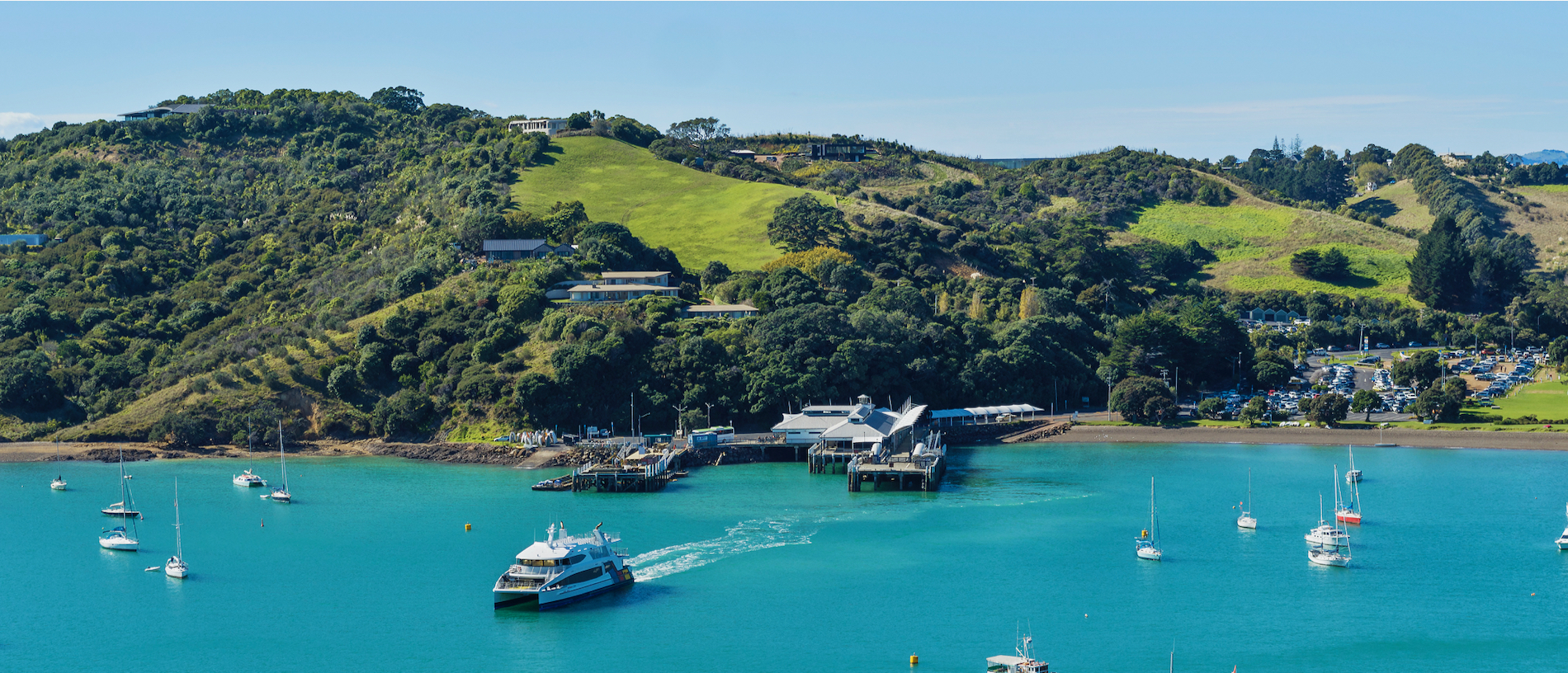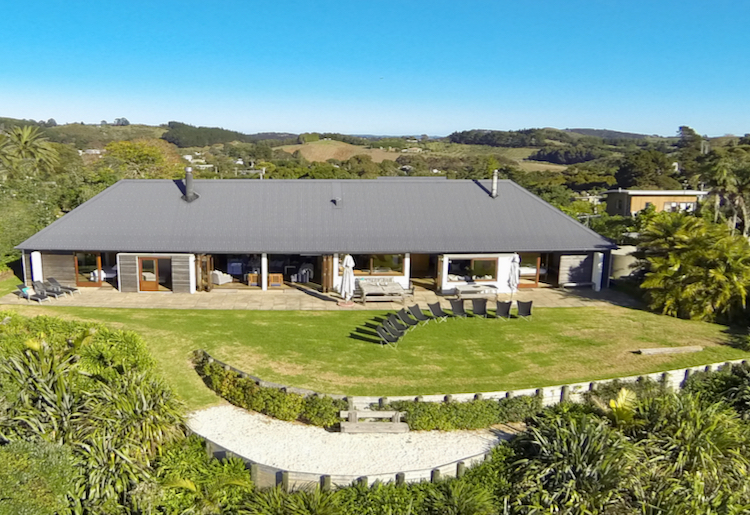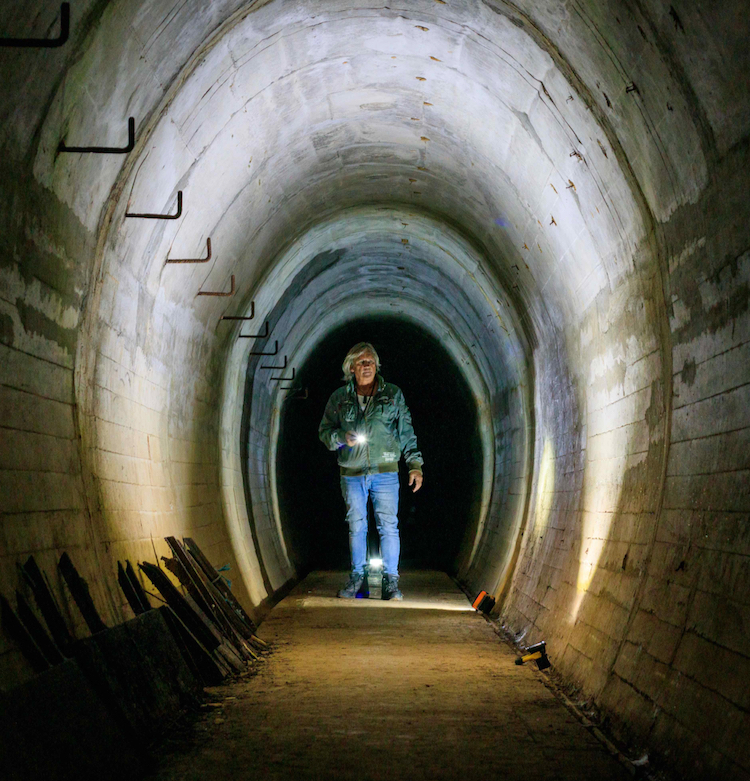
Waiheke Island: home away from home
If you can’t live in a home with wide views over the sea and a track to a beach, the next best thing is to rent one for a few days.
This is what we did, on Waiheke Island. We transported ourselves from Auckland life to island life with a 40-minute ferry ride, a short drive, a quick unpack into a glorious house high above Onetangi and voila, new life. Temporary but transformative.
Architecturally designed, The Pah is one of those homes that instantly welcomes, with every element considered and views, light and privacy at maximum advantage. We could have spent the entire holiday there, pretending it was ours, but there were places to be, things to see, things to do. And as a 4WD vehicle came with the house, courtesy of Stay Waiheke, getting around was super easy.

As restaurant Three Seven Two on Onetangi Beach had been recommended, we made our way there and settled at a table out of the wind to linger in a tropical garden to enjoy fresh, delicious, interesting food.
It was a scene of local buzz, too, and gave us some insight into the social life enjoyed here. We’d stopped between the ferry and ‘home’ at the community art gallery at Oneroa and that, too, provided a measure of the island’s residents. An eclectic collection of works was vying for an award in a show of local creative talent. The neighbouring shop was also worth a slow browse, loaded as it was with intriguing original items. Surely anyone looking for a special something to remember their time on Waiheke would find it in the gallery or the gallery shop. Another obvious souvenir would be a bottle of local wine.
Yes, Waiheke produces some very fine wine. But we knew that. We wanted to know what else it did well. To get a good look at this place, we decided to look over it, under it, around it.

First, over it. Waiheke Wings is based at the small aerodrome in the middle of the island. A grass strip, a shed, a bit of a fence. Climbing into the back of a Cessna was reminiscent of the clamber into the back of a Morris Minor or old-school Mini – the tight, cosy space just big enough for two. The plane swooped so we could look down into pockets of bush and surprisingly empty areas over ‘the bottom end’, the pilot pointing out various bays, beaches and wharves below.
The bottom end was once the busy, thriving part of the island in the early days of European presence. Crops were grown here, supplying Auckland and the busy Thames hub at the height of gold extraction on the Coromandel Peninsula.
There are many pā sites on Waiheke and a history mostly lost under the business of farming, development and high-end lifestyles. Among the lines of grape vines are signs of sensitive replanting and care, with patches of protected bush and evidence of replenishing.
We flew over parts of the island that can’t be seen from the road or from the sea, then along the coast looking into bays with huge houses and wharves like fingers pointing at shiny moored boats. As we soared up the northern coast with its stretches of white beaches, we spotted ‘our’ house.
Before heading back to the air strip we spied weird concrete circles marking the Fort Stony Batter Heritage Park which we were visiting next.

Above ground, Stony Batter is a 50-acre patch of land with mysterious concrete plates, pads and blocks amongst a scatter of volcanic rocks. A few sheep meander nonchalantly; visiting humans photograph the expansive views out to sea.
Below ground is another world. In a network of tunnels and chambers, a heritage project has preserved an extraordinary mission dating back to WWII. A defence system of observation posts was developed in key spots around the Hauraki Gulf, and Stony Batter was at its centre, with gun emplacements, radar technology and communication systems built in high-security, top-secret mode.
We were shown around by archeologist Tim Moon who has been entrusted by Ngāti Paoa as kaitiaki of Stony Batter. Determined to bring fresh energy to the site, he encourages engagement alongside preservation and restoration. He runs heritage tours but also art tours, as some of the underground chambers host exhibitions, events and concerts. At the entrance to a large, low-ceilinged hall glowing in golden light, we stopped to listen as vocalists readied themselves for recording.
Visitors can take torches down steep, cold staircases into concrete corridors up to half a kilometre long, into chambers up to seven storeys deep. We followed Tim down steps lit with multi-coloured bulbs to the control centre where historic photos, maps and samples of military calculations fed our imaginations. Army personnel would have worked and worried in secret and silence down here, watching for the enemy and preparing for trouble.
Tim showed us out of the tunnels and blinking in the sunlight we wandered back to the car, past the massive circular gun emplacements, no longer so mysterious. The sheep seemed oblivious.
From there we drove the long way, heading down to Man o’ War Bay and to Ōmiha, clocking the circle, having seen it from above.

Our evening meal was at Mudbrick, where all eyes were on the sunset glowing over the distant city. Auckland’s lights came on and sparkled cheerfully from afar, like a party boat, multi-coloured fairy lights tossed across the view.
We’d been over and under and along its various roads; we were now keen to see Waiheke from the water so accepted an invitation to board Oi, a small, fast and sturdy boat owned by tour company, By Sea.
From Matiatia’s old wharf we zipped up the northern coastline with our captain, Grant, telling us about local conservation projects, identifying various seabirds, pointing out nests of rare shags. His mission is to increase awareness of the precious but fragile ocean environment. The Hauraki Gulf is an internationally significant breeding ground for around 40 seabird species, he told us.
Grant’s love and respect for the island was inspiring and echoed a sentiment we’d felt everywhere we’d been on Waiheke.
We pondered this as we rode the Fullers360 ferry back to Auckland, back to reality, watching the island’s edges shimmer and fade as we went.
Story by Kathryn Webster for the Autumn 2023 issue of AA Directions magazine.
